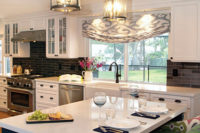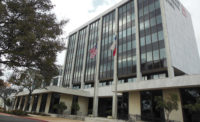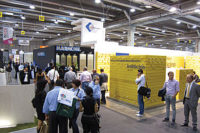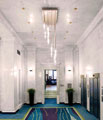
The Alaska Building in Seattle, which is now a
division of Courtyard by the Marriott Brand, recently went through an interior
reconstruction and renovation. The project, which is listed on the National
Register of Historic Places, involved salvaging original stone pieces, and also
selecting new materials that would respect and match the historic nature of the
structure. Architect: Degen & Degen, Seattle, WA; Stone Restorer/Installer:
Stoneworks North Pacific, Carnation, WA; Stone Supplier/Fabricator: Stoneworks
North Pacific, Carnation, WA (White Carrara marble and Ice Pearl granite);
Quartz Manufacturer: CaesarStone Quartz Surfacing, Van Nuys, CA
Set in the heart of Seattle’s Pioneer Square - one of the most historic tourist districts in America - the Alaska Building, which is now a division of Courtyard by the Marriott Brand, recently went through an interior reconstruction and renovation. The project, which is listed on the National Register of Historic Places, involved salvaging original stone pieces, and also selecting new materials that would respect and match the historic nature of this structure.
“We had to keep two different things in mind,” said Zoë Perpich, Associate Interior Designer and Project Lead Designer at Degen & Degen of Seattle, WA, which served as the interior design architect for the project. “One was to respect the historic nature of the building, and the other was to also respect the Marriott Brand.”
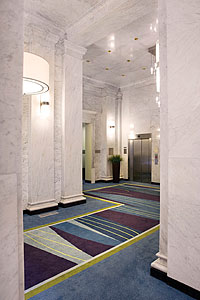
The original main lobby consisted of Alaska Gray
marble that was salvaged, restored and cleaned for some of the new main spaces.
At the time of the reconstruction, this area was converted into the
foyer/elevator area of the new lobby, still featuring floor-to-ceiling marble
walls, a restored original bronze mail shoot and a marble ceiling with
untouched arches and plaster molding details.
According to a statement released by Degen & Degen, the design was “influenced by the building’s original detailing and marble as well as the surrounding views to alter the brand’s color scheme.” Moreover, the design team had to fit in modern elements. “The design solution was to float a bold new interior within this century-old architectural framework,” said the statement.
The original main lobby consisted of Alaska Gray marble that was salvaged, restored and cleaned for some of the new main spaces. At the time of the reconstruction, this area was converted into the foyer/elevator area of the new lobby, still featuring floor-to-ceiling marble walls, a restored original bronze mail shoot and a marble ceiling with untouched arches and plaster molding details. Some of the original Alaska Gray marble was then carried into the new main lobby’s reception area.
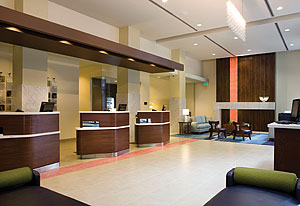
White Carrara marble from Stoneworks North Pacific of
Carnation, WA was added to areas where the Alaska Gray marble was unusable. The
material can be found as wainscoting and for columns in the reception area of
the main lobby. Additionally, 6600 Nougat from CaesarStone Quartz Surfacing of
Van Nuys, CA, was employed for the front desk pedestals/transaction tops, a
“quick print” countertop and market countertops. Completing the look of the
lobby is a strip of iridescent orange glass mosaics that runs down an accent
wall and onto the floor - adding a contemporary flair.
To introduce a contemporary feel, new materials were either “floating,” held back or suspended from the original structure, so that the historic elements remained untouched, according to Perpich. Such materials in the lobby include 6600 Nougat from CaesarStone Quartz Surfacing of Van Nuys, CA, for the front desk pedestals/transaction tops, a “quick print” countertop and market countertops. The same material was brought into the public restrooms as vanity tops, in the Lounge Bar at the Bistro Restaurant and for countertops in the meeting room and ballroom.
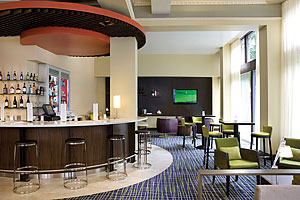
The hotel’s bar also features a slab of 6600 Nougat
from CaesarStone Quartz Surfacing.
According to the design statement, “The 262 guestrooms, suites and extended
stay rooms embrace both the history and the natural beauty of the Pacific
Northwest.” The project began design plans in November of 2006 and opened in
June 2010. “It’s been great for that part of town,” said Perpich. “It’s toned
it up. I loved that we could respect the arches, old stonework and building’s
nature, but still make is fresh. The Marriott is very happy.”

In the hotel guest rooms, Ice Pearl granite was chosen
for vanity tops.
